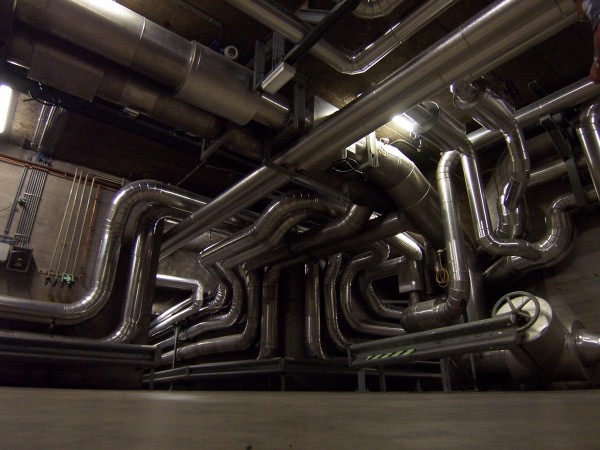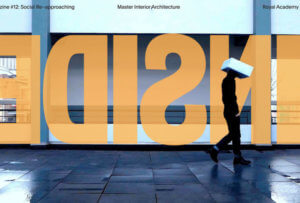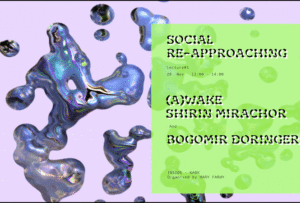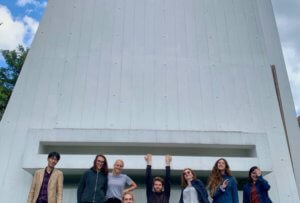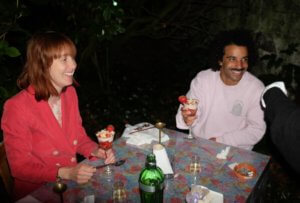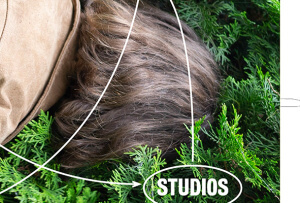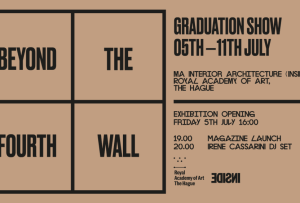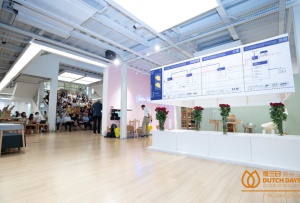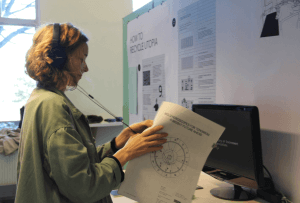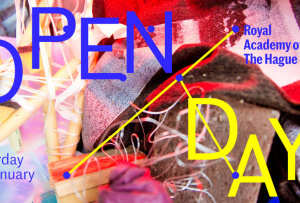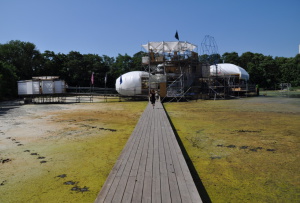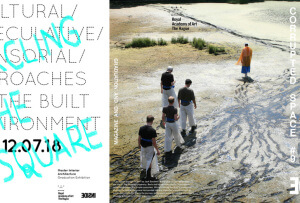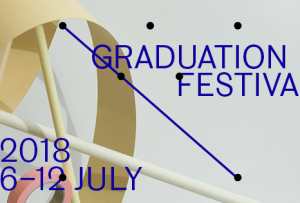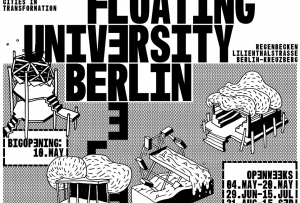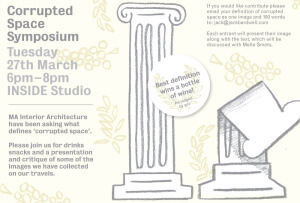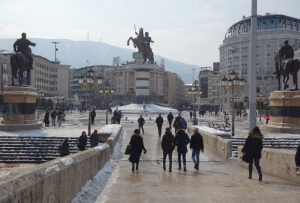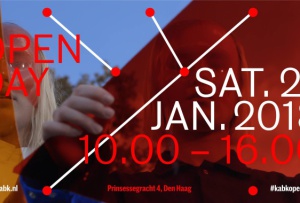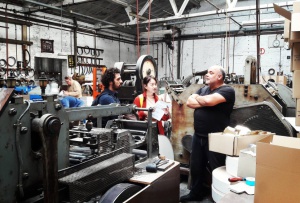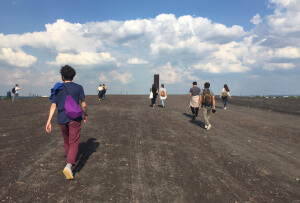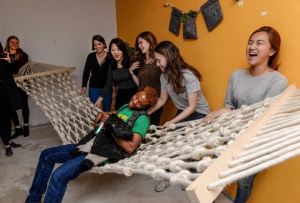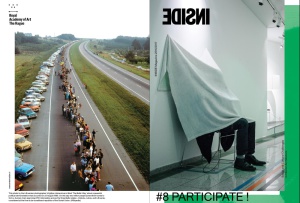FLOWS – Research Group
Heatpipes VU Amsterdam (photo J. Jongert)
Studio by Superuse Studios
Contemporary interiors increasingly depend on a complex of connecting flows
The research group ‘INSIDE flows’ investigates the specifications and behaviour of these flows to support the development of sustainable design methods.
Flows are characterised by the fact that they have a performance in time. Which means they have an origin and a destination and can be manipulated in between.
Flows enter a system, for example a building, are altered by our activities, such as eating, breathing or emailing, and leave again, sometimes in a different state.
By now we’ve discovered 14 different flows that constitute the ecosystem of our environments. Flows varying from energy, water and food to knowledge, money and users, each of them behaving dfferently and offering a different potential for designing. Practical knowledge for application in design and research as well as the means to represent flow systems will be subject of research. Conclusively the research group supports the flow of knowledge within the Master course, providing a knowledge base/ encyclopedia and connecting different students projects by giving acces to the accumulating knowledge from the perspective of flows.
The research groups main aim is to give you effective tools to be able to act inside the real world, for this we want you to become a master of flows.
Student Work FLOWS
1. 14 FLOWS
Flows are the movement of mass, energy or value per time unit. INSIDE flows has identified 14 flows subdivided in 3 categories: physical, energy and value.
Physical flows: tangible or observable matter, in a solid, liquid or gas shape. These also include traffic of cars and trucks, and people using space.
Energy flows: the power available in a physical system.
Value flows: the least tangible and quantifiable, they express appreciation and quality of the physical and energetic flows passing through a system.
PHYSICAL FLOWS
Users
People that use the planet. They move around and are involved in different activities that put many of the flows that are discussed in motion.
Example: the flow of people that travel by metro from home to work.
Nature
Living flora and fauna that can spread, concentrate, expand, decline or migrate to different areas.
Example: plant species that expand in different areas by spreading their seeds with the flow of air or the flow of animals.
Food and other organics
Dead organic material that is biodegradable and renewable. Food and wood are examples of organic material flows.
Example: vegetables grown on agricultural land, transported to markets and distributed to kitchens where they are prepared for consumption. After this process the organic material flows further as food waste collected for waste treatment and human excreta into the sewage.
Inorganic material
Inanimate, non-biological material that can both be natural or man-made.
Example: glass is produced from sand and turned into a bottle, after which it is used, discarded and recycled into new glass for a new bottle.
Traffic
A flow of vehicles to transport people and/or goods.
Example: a truck picking up products from a producer and delivering them to a supermarket.
Water and other liquids
Fluid matter. Water is by far the most common liquid flow on earth and is vital for all known forms of life.
Example: rain and melting snow flow via rivers into water treatment plants and into our houses, where we use it to drink, bath or rinse. From here most of the water flows via sewage systems into treatment plants to be filtered and to flow back into rivers or into our houses.
Air and other gases
The Earth’s atmosphere. The atmosphere contains different layers and gases.
Example: the flow of air in a natural ventilation system of a building. Warm air in a building can be allowed to rise and flow out upper openings to the outside thus forcing cool outside air to be drawn into the building naturally through openings in the lower areas.
ENERGY
Electricity and other power
A form of energy resulting from the existence of charged particles (such as electrons or protons), either statically as an accumulation of charge or dynamically as current (flow). Electric energy is measured in joules (J) or kilowatt-hours (kW h).
Example: in a generator electricity is generated by the movement of a loop of wire, or disc of copper between the poles of a magnet. Electricity is transported to our homes through metal wires.
Heat
Energy transferred from one body to another by thermal interactions.
Example: with the cultivation of mushrooms, heat is produced and exchanged with the surrounding air. This residual heat can be used to warm up the air in a nearby space.
Light
Visisble light is electromagnetic radiation that can be perceived by the human eye, with wavelengths between approximately 380 and 740 nanometres. Other forms of light, such as infrared and ultraviolet, have different wavelengths and are therefore invisible to the human eye.
Example: sunlight that is transmitted by solar cells into electricity, used to power a lamp and thus transformed into light and heat.
Sound
A sequence of waves of pressure, composed of frequencies that can be perceived by our hearing.
Example: at a radio station, sound from one user is transformed into electromagnetic waves that travel through space. When these waves strike an electrical conductor, the information in the waves can be extracted and transformed back into sound.
VALUE
Data/ information and knowledge
Data are the variables belonging to an item or a set of items. Data can be numbers, words, images, etc. For data to become information, it must be interpreted and take on a meaning. Knowledge is a more embedded form of information. It can refer to the theoretical or practical understanding of a subject, derived from experience or education.
Example: a carpenter teaching a craft to an apprentice who learns through study and practice and applies his acquired skills to objects that are sold and exhibited in people’s houses.
Money
Money, as a legal tender, is a commodity or asset, or an officially-issued currency or coin that can be legally exchanged for something of equal value, such as a good or service, or that can be used in payment of a debt.
Example: “…the Food Bank (Voedselbank) in the Netherlands exists because food producers must pay to destroy their mislabeled or overstocked products, while they are tax-incentivized to donate to the Food Bank, who then distributes the food to low income households. Without the policies, the food producers would more likely take the easier route of destroying their food. Without the Food Bank, the tax-incentive spent by the government on subsidizing the non-destruction of food may be given to low income families, who then could purchase food with the money. The cyclification occurs because the entire system is more efficient as the Food Bank creates a material and economic shortcut between the food producers and low income families.” (Cyclifier, )
Identity and culture
Identity is a person’s concept and expression of their individuality or group affiliations. Culture is the evolved human capacity to classify and represent experiences with symbols, and to act imaginatively and creatively.
Example: people that migrate and take their food culture with them, which they share with local habitants.
2. DESIGNING WITH FLOWS
Current design practice suffers from the segregation of activity and fierce specialisation. This has led to designers rapidly becoming dependent on external specialists and losing one of their primary capacities: to integrate. In interiors, this becomes visible in dysfunctional space, waste and pollution, undesired systems interfering with each other and with the quality of space.
Also the process of design and construction is frustrated. Because, as the designer pulls back to become an aesthetic consultant, the role to structure the integration of different flows in the development of the design remains vacant. At best, designs are hiding the conflicts and omissions from the users of spaces.
The most common example is the vast number of buildings being constructed out of concrete causing overheated spaces that need to be cooled by air-conditioning, leading to noise and heat problems for others. In densely populated spaces, people need to close their windows against their neighbours’ exhaust, leading to even more climatisation. The disconnection of the specialists dealing with different problems and the hidden nature of most of these processes results in fears and protective behaviour of the different stakeholders operating in each other’s field of interest.
Industrial revolution and technological progress have led to automatization, standardization and the production of cheap products, components and housing. By using this as a standard to ensure a certain quality of living for a growing urban population, integrating flows from the direct environment has been minimized or forgotten. Natural ecosystems and climate are extremely site specific. This also counts for local societies and culture. One size fits all solutions prove to be counterproductive on the long term.
With our research group, we believe that understanding our environment as an interconnected dynamic ecosystem can help us overcome the gridlock. We cannot do this without the knowledge of the flows that create it and without understanding their mutual influence.
One by one INSIDEflows investigates how a flow is best analysed, represented and how design can optimally act upon them to profit from their presence. In practice it means that we analyse existing designs and sites, investigate losses and disconnections in the process or the physical space, then search for opportunities to design the (re)connection.
Buildings and products that intergrate flows consciously are adapted to the reality of their surroundings and reflect the identity of place and users. This way, designing with flows often has social, economic and/or environmental benefits.
3. ANALYSING FLOWS
One way to analyse flows in real life situations is by making a flow diagram. Mapping out the course of a flow in a system and including all actors that influence its course, helps us to understand the performance of flows. Subsequently it allows us to influence flows with design interventions.
There are many ways of creating flow diagrams, but so far we found flows best represented by Material Flow Analysis diagrams (MFA diagrams) and sankey diagrams. MFA diagrams show which processes and actors are present in a system, how flows are directed and distributed through the system and what quantities they encompass. MFA diagrams and sankey diagrams will be one of our major means of expression.
4. CONNECTING FIELDS OF STUDY
Flow-based design is derived from and linked to a broad range of studies that focus on local context and integral sustainability. Important are ecology, industrial ecology, systemic design and systems thinking. But also social studies such as anthropology or geography can be used as a starting point. During the course of the program you will be introduced to the most important concepts of these studies.
5. WEBSITE AND PLATFORMS
A great way to get more familar with the use of flows in design is to study the work of other designers. The website insideflows.org is an online community of designers, interior architects and everybody else who is interested in designs that are based on the knowledge of flows.
The site allows you to promote items that celebrate inventive sustainable interiors. This means that all examples of flow-based design for small commodities, furniture, building interiors and urban interiors are welcomed. Next to exhibiting applications, we promote the development of knowledge on the subject by analysis, adding scientific background and allowing user comments.
Apart from design projects, the website contains various resources to learn more about flows and sustainable practice in general. These are seated under the catecory ‘resources’.
Here you can find a selection of books, but also video’s, websites, images, diagrams and other graphics. They give substantial information, but also show examples of how to visualize flow research.
WEBSITES AND PLATFORMS
www.cyclifier.org
www.superuse.org
www.oogstkaart.nl
http://visualizing.org/
http://www.save-the-rain.com/SR2/
FOR MORE INFORMATION PLEASE CONTACT
Jan Jongert
Head of INSIDE Flows
Head of Research at Superuse Studios
Email: jan@superuse-studios.com
Website: www.superuse-studios.com
Lizanne Dirkx
Researcher at INSIDE Flows/ Superuse Studios
Email: lizanne.superuse@gmail.com
